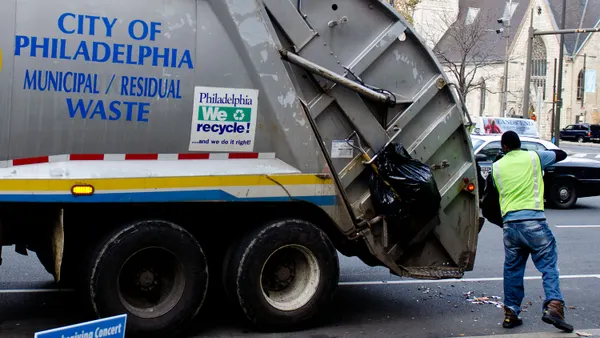Editor's Note: This piece was by Katrina McMurrian, executive director of the Critical Consumer Issues Forum (CCIF). The opinions represented in this piece are independent of Smart Cities Dive's views.
Across the nation, communities are building smarter energy infrastructure that leverages the power of data to solve problems. This includes charging stations for electric vehicles, smart lighting that adjusts its light intensity to save energy, and more sophisticated transportation that adapts to relieve congestion. These projects will spur economic development, improve sustainability, enhance public safety and drive efficiencies – ultimately creating a better quality of life for citizens.
In order for more of these projects to become reality, key stakeholders in the community, private industry, and government must understand how best to work together. That’s why many organizations have been exploring the topic of smart communities. What’s emerged has been an illuminating understanding of the concept of and driving forces behind smart communities, the alignment of objectives of smart initiatives and certain regulatory policies, and the roles these parties can play with respect to smart community initiatives.
Notably, many smart community projects align with the electric power industry’s ongoing efforts to advance energy infrastructure (e.g., grid modernization, grid resilience, electrification). Such matters generally involve state utility regulators and consumer advocates. Thus, there is value in these entities engaging in collaborative efforts with communities and energy company partners.
Clean energy solutions, for example, require collaboration. Communities recognize that air quality is an important component of quality of life. Transportation electrification strategies such as smart parking, more efficient street lights, and modernized traffic signals have the potential to improve transportation while reducing congestion and electricity use, improving air quality, and helping meet sustainability goals.
Communities want to improve their infrastructure holistically, including the deployment of smart technologies that utilize state-of-the art data analytics to improve a wide array of community needs. Energy companies have essential assets — including the energy grid itself — that make their participation crucial for the success of smart communities. For example, things like smart grid sensors can give customers more control over their energy costs and connect homes and businesses with cleaner energy sources.
Moving forward, it is clear that energy companies will continue their traditional role as service providers. However, there are increasing opportunities to also assist communities as project partners, collaborators, or advisors. Similarly, CCIF envisions traditional roles for state utility regulators as decision-makers and consumer advocates as intervenors on behalf of customers, but also highlights potential roles as conveners, facilitators, advisors, and collaborators.
Above all, the way forward includes ongoing dialogue, partnership, and examination of the roles and responsibilities of these critical parties given increasing opportunities for smart communities. When it comes to making their communities smarter, electric companies, state utility regulators, consumer advocates, and community leaders are up against similar challenges and working toward similar goals. Ongoing cooperation and an acknowledgement of the objectives and priorities of each group will ensure that we can improve the well-being of citizens across the nation.









